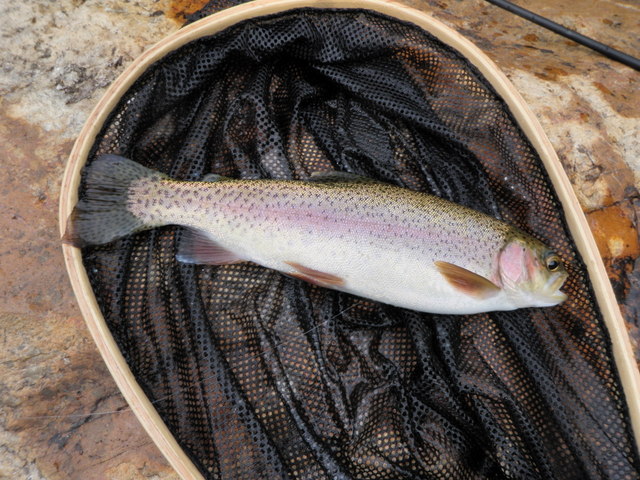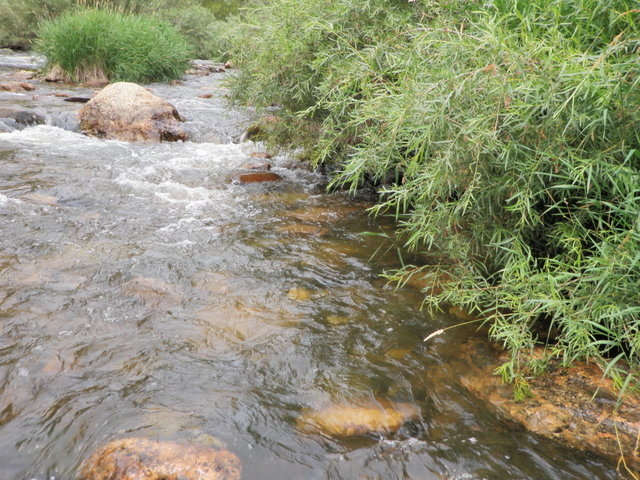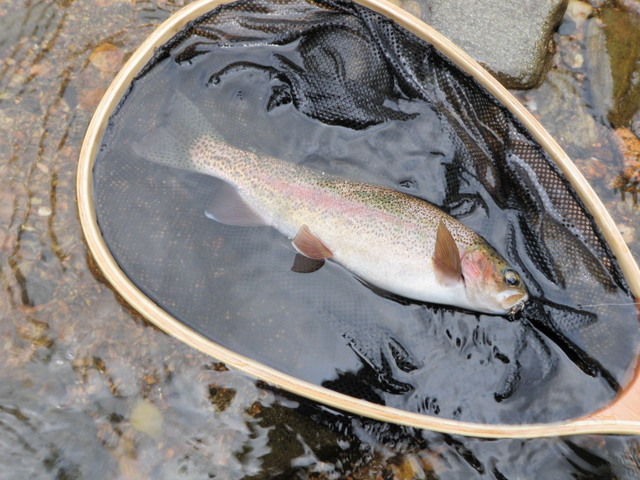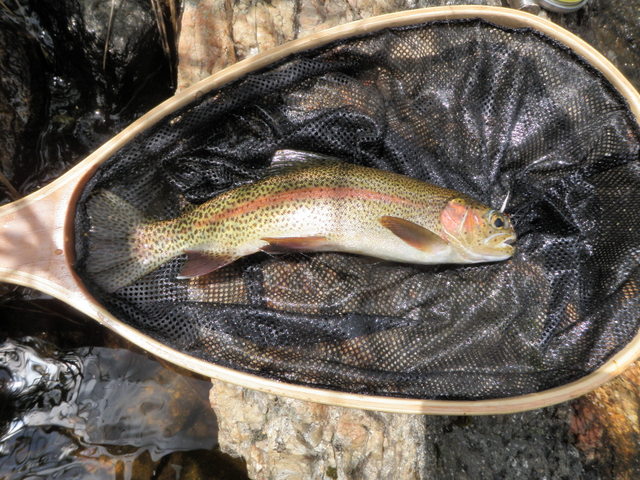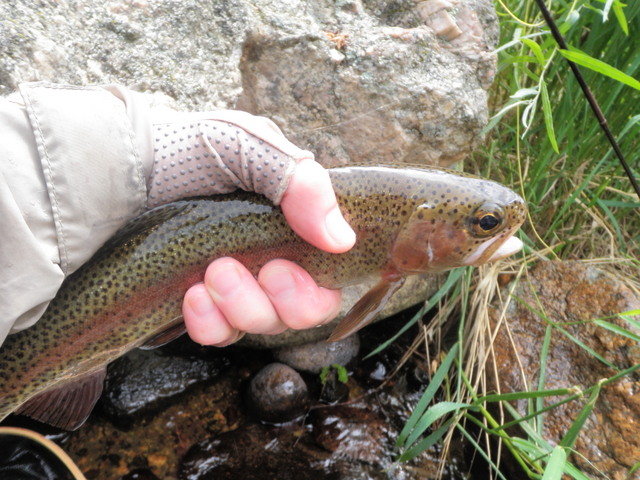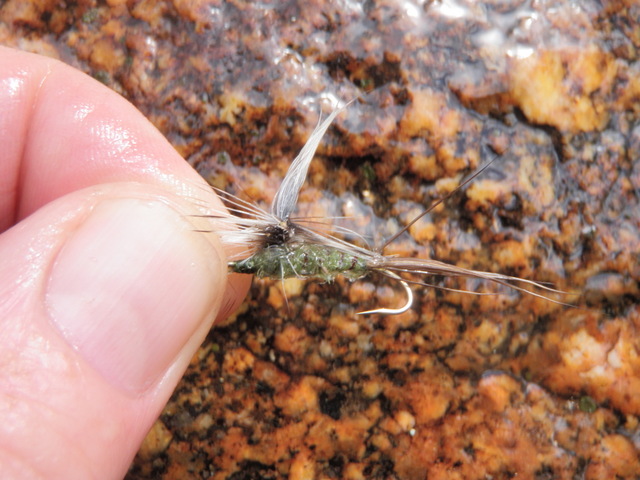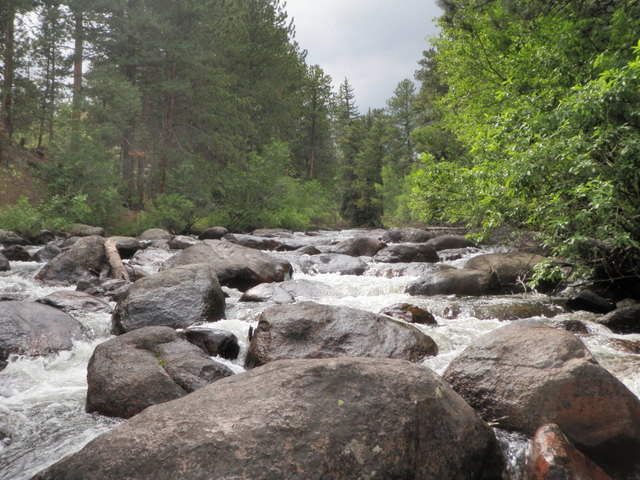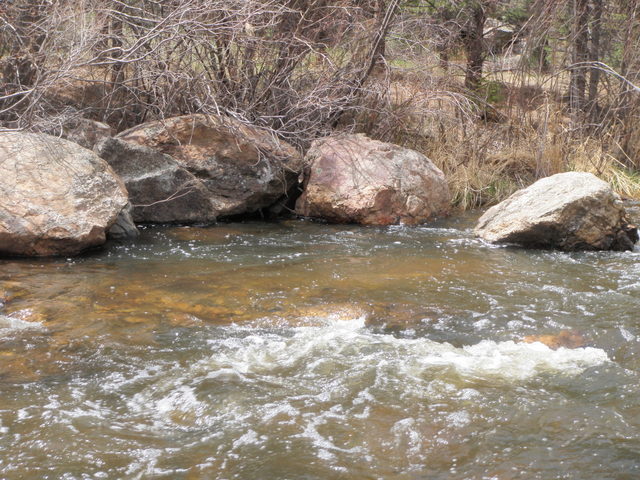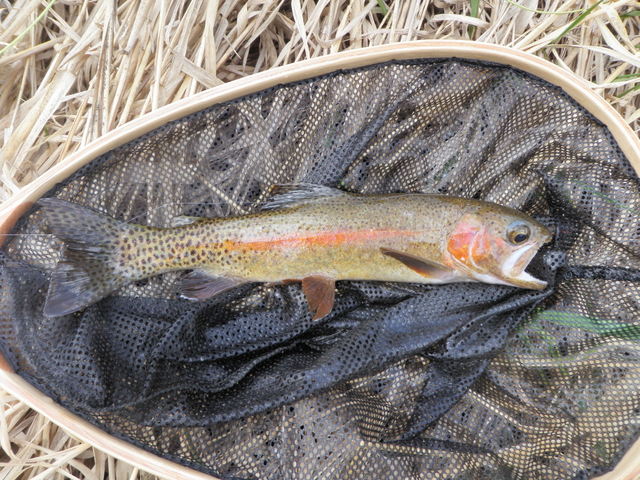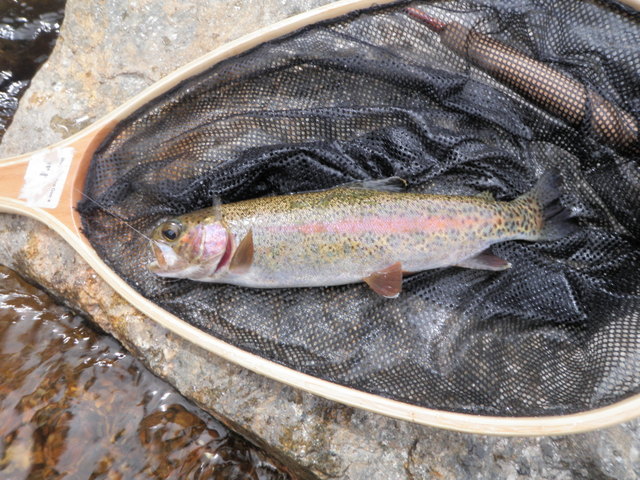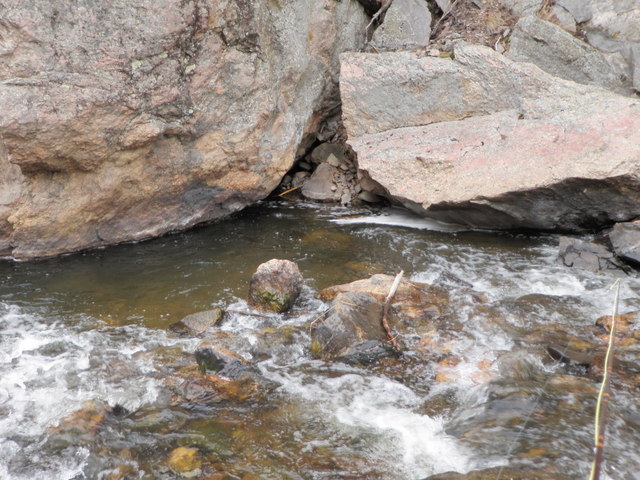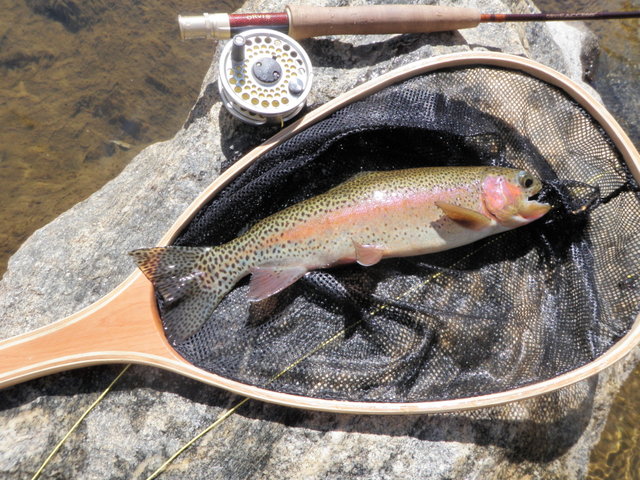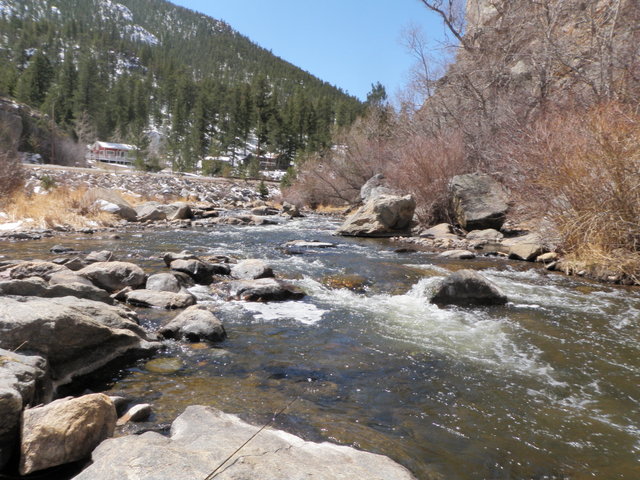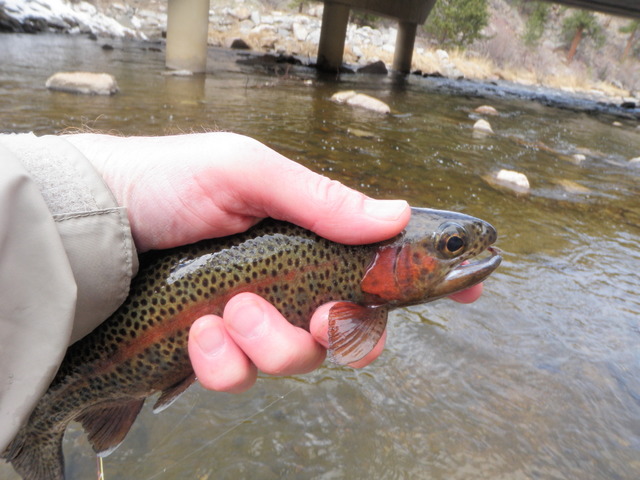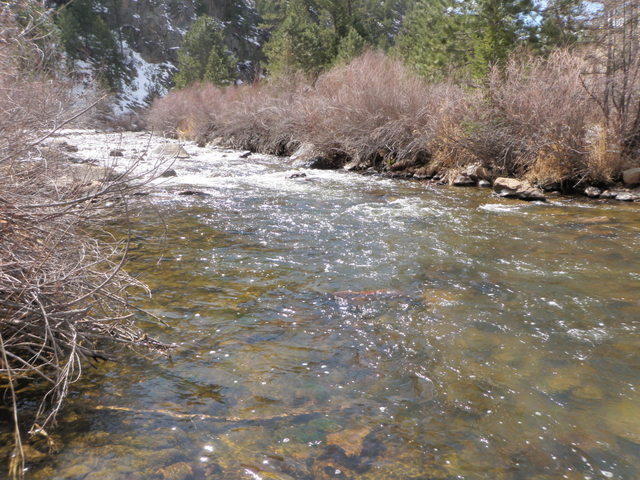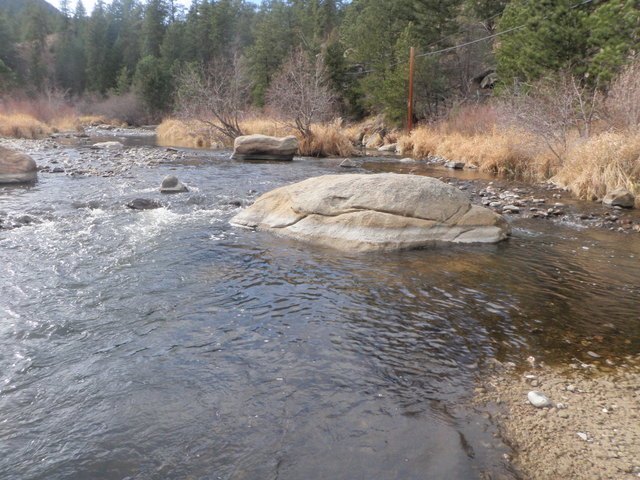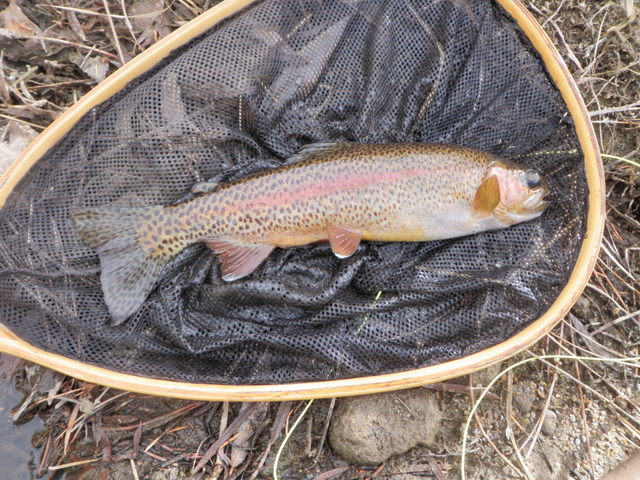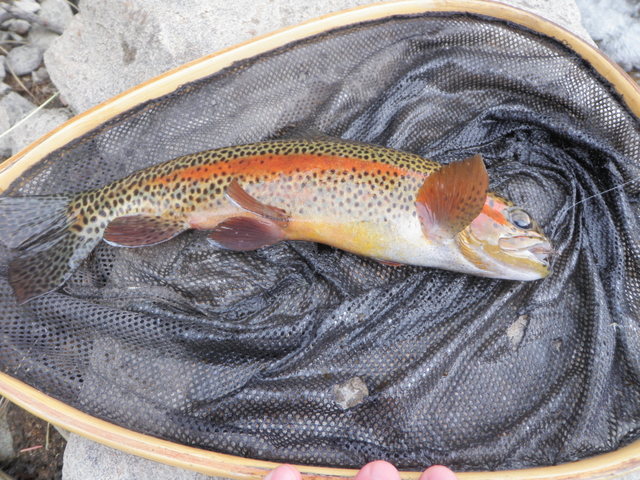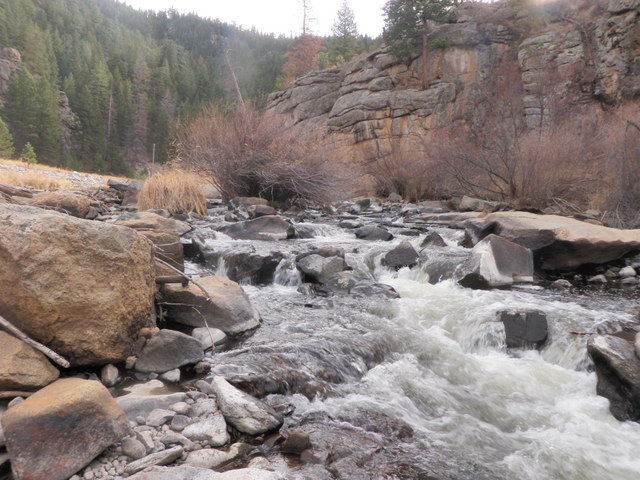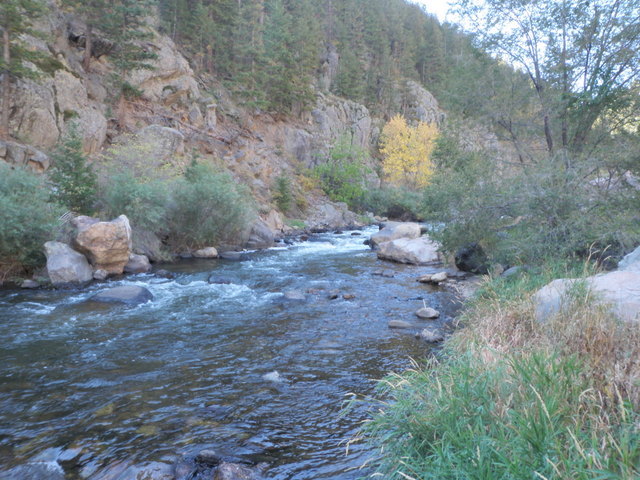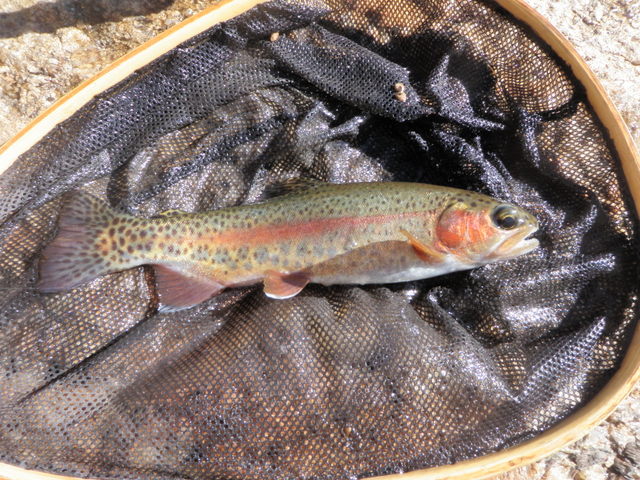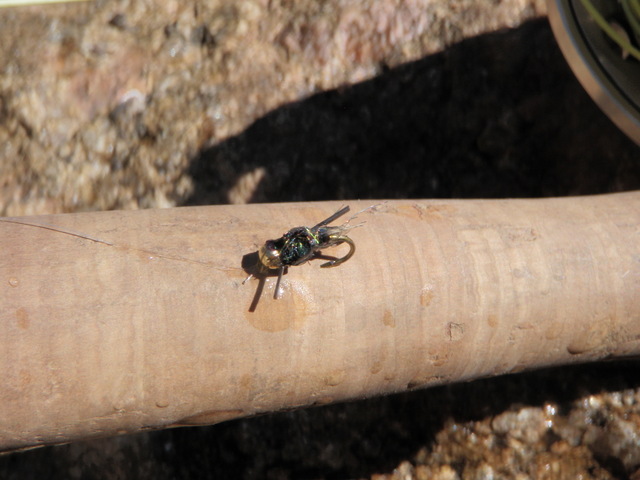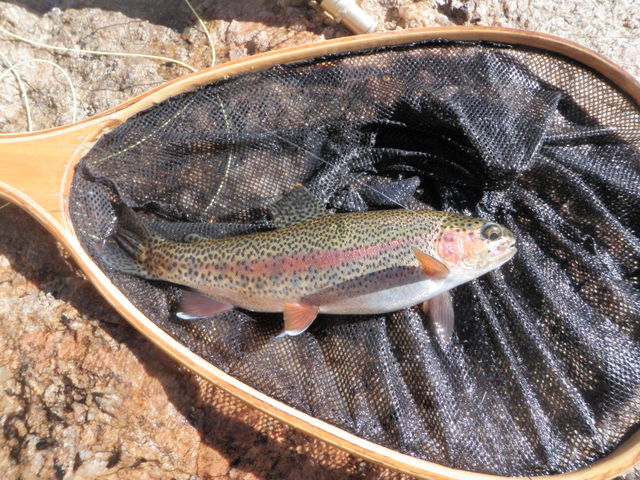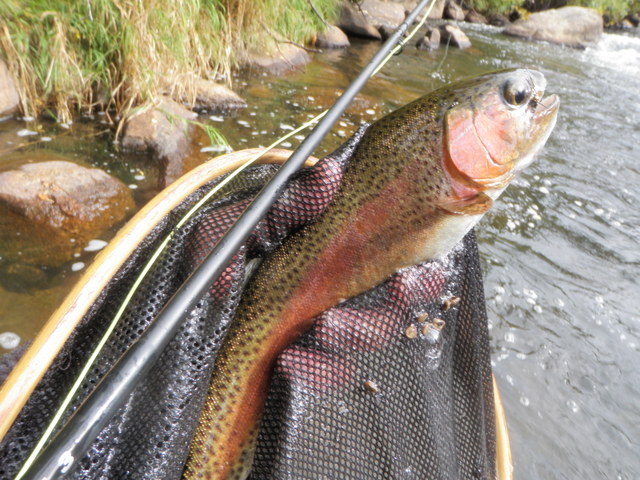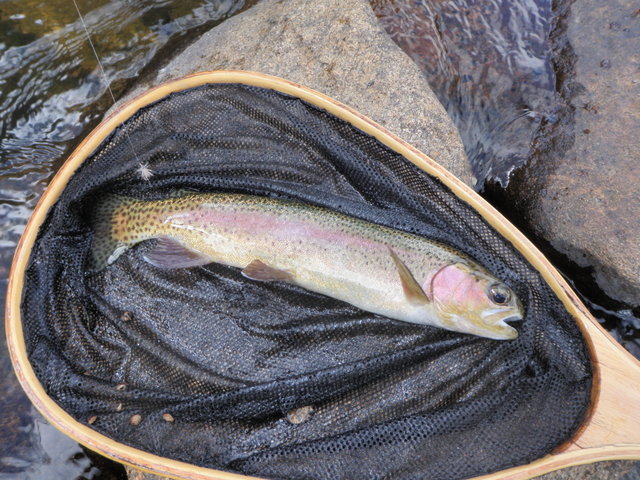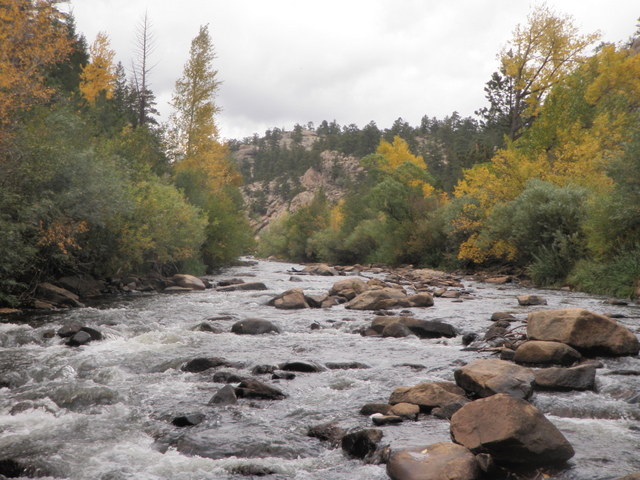Time: 9:30AM – 3:30PM
Location: Downstream end of catch and release water
Fish Landed: 14
Big Thompson River 08/08/2013 photo album
My original plan for the week of August 5 was to work Monday and Tuesday and then drive to the Happy Meadows Campground on Tuesday evening so that I was positioned to hike into Wildcat Canyon and fish the South Platte River on Wednesday. If all worked out, I planned to camp again on Wednesday night and then fish in Eleven Mile Canyon on Thursday. Unfortunately when I checked the weather report for Wednesday it called for an 80% chance of rain and 1 to 2 inches. This forecast spooked me so I decided to defer this trip and instead I reported to work on Wednesday.
The upside to all this is that I completed everything I can at work for July closing, so I am now in wait mode until the office manager completes her portion of the process. This probably won’t happen until August 26, so I’m pretty much free to fish for the next week and a half. Thursday became the first open date on my calendar so I made a trip to the Big Thompson River. The forecast for Estes Park on Thursday projected overcast skies and a high of around 70 degrees. This forecast did in fact turn out to be accurate.
The flows on the Big Thompson were slightly reduced to 90 cfs after running at 125 for most of the summer. These flows are still quite high for August, but create decent fishing conditions. I felt that the slightly lower flows and the cooler weather and overcast skies would create an ideal environment for catching fish. Was I right?
I set out by 7:15AM and arrived at the river by 9AM and was in the water fishing by 9:30. It was quite cool when I began, so I wore my fleece under my wader suspenders, but after 20 minutes or so the sun came out and I circled back to the car to return the added layer. After approximately 20 minutes of fishing a fish rose and smashed my 14 inch caddis with a palmered body and I landed my first fish of the day, a chubby rainbow trout. I was noticing quite a few midges in the air so I added a size 24 zebra midge dropper below my bushy caddis and picked up a small brown on the midge. After this however I went quite awhile before another similar sized rainbow gulped the caddis. Once again a dry spell commenced so I eventually removed the caddis and midge larva and decided to try a parachute green drake. This fly had been effective during my last visit to the Big Thompson, so why not give it another try?
I was below a narrow slack lane next to the willow covered bank so I made a left handed cast approximately 10 feet upstream and as the drake drifted back toward me, a fish darted from cover and blasted the green drake. I still had the rod in my left hand so I set the hook and played the fish which turned out to be an eleven inch brown. I was quite proud to land a fish almost entirely left handed.
I remember looking at my watch and being pleased that I’d landed four fish in the first two hours by around 11:20, but before I returned to the car to eat, I landed another small brown on the green drake. By 11:30 I was feeling quite hungry so I walked back along the shoulder of the highway to the car, and then executed a U-turn and found a pullout above the point where I’d exited for lunch. Here I crossed the road with my lunch bag and water and munched away on a nice flat rock overlooking the river.
After lunch I returned to my exit point which represented a nice opportunity to cross the stream to the opposite bank as the river fanned out and presented shallower depth and less velocity. My theory was that the flows at 125 cfs prevented other fishermen from covering the left bank, and this would work to my advantage. The sky brightened a bit, but there were still numerous large high clouds blocking the sun’s attempt to warm the atmosphere. I resumed prospecting with the parachute green drake, but covered quite a bit of water with only a few refusals to show for my efforts so I resorted to my old faithful combination of a gray hares ear parachute hopper and beadhead hares ear nymph.
This didn’t really improve matters so after a fairly short test in some very attractive water, I replaced the beadhead hares ear with a salvation nymph, and this proved to be the best combination I would discover on Thursday. The catch rate improved so that I landed another nine trout after lunch with most of the activity taking place between noon and 2:30. Most of the fish grabbed the trailing salvation nymph with at least one aggressively smashing the hopper imitation. It was the typical type of fishing that I enjoy; prospecting all the likely spots with three to five casts and moving on quickly.
The downside of working the bank away from the road was the difficult maneuvering required to migrate upstream. It involved rock climbing, moving up and down steep banks, and crashing through thick brush and tree limbs. This resulted in increased movement time and reduced time with my fly on the water as well as increased fatigue. By 3PM the sun was peaking out more frequently and the action slowed considerably so I decided to try the green drake again. I skipped past some fast water and walked up along the shoulder of the road looking for the most attractive water. When I found a nice pool and shallow riffle area I positioned myself downstream and covered the area with the green drake, but nothing was interested in my offering. I glanced at my watch and noticed it was 3:30 and I was feeling more tired than normal so I decided to call it a day.
I was pleased to land 14 fish on the Big Thompson despite the fact that I saw very little hatching activity in spite of overcast skies and cool temperatures. Roughly half of the fish landed were rainbows and the other half browns and the largest fish was probably twelve inches. I probably had half a dozen momentary hook ups and long distance releases, so it could have been a better day, but overall I’m pleased with the outing. It surely served as good exercise.

